Tennis is a sport that combines physical prowess, mental strategy, and technical skill, making it both challenging and rewarding for newcomers. When starting your tennis journey, understanding the fundamentals—from selecting the right equipment to mastering basic strokes—creates a solid foundation for improvement. Learning tennis requires patience and practice, but with proper guidance on grip techniques, footwork, and serving mechanics, beginners can quickly develop the confidence to enjoy recreational play.
Getting started doesn’t require expensive equipment or extensive knowledge of complex rules. A decent racket, comfortable athletic clothes, supportive tennis shoes, and a few balls are enough to begin practicing. The basic premise is simple: hit the ball over the net and into your opponent’s court without letting it bounce twice on your side, while following serving rules and court boundaries.
Key Takeaways
- Choose appropriate equipment including a mid-sized racket, supportive tennis shoes, and comfortable clothing that allows freedom of movement.
- Master the fundamental strokes—forehand, backhand, serve, and volley—through consistent practice and proper technique.
- Learn tennis scoring, basic rules, and court etiquette to confidently participate in games and gradually improve your skills.

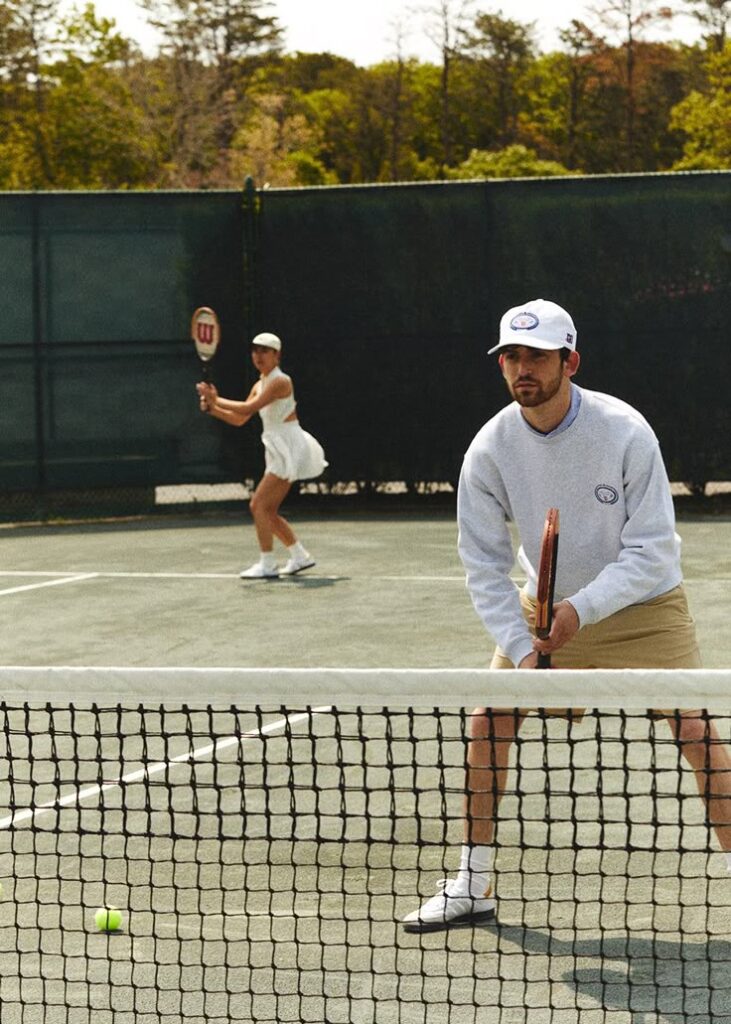
Essential Tennis Equipment
Having the right gear significantly impacts your performance and enjoyment on the tennis court. Proper equipment helps prevent injuries while allowing you to develop proper technique from the beginning of your tennis journey.
Choosing the Right Tennis Racket
Tennis rackets are the most critical piece of equipment you’ll purchase. For beginners, look for rackets that are lightweight (9-11 ounces) with larger head sizes (100-110 square inches) to provide more power and a larger sweet spot.
Grip size matters tremendously for comfort and preventing injury. To find your ideal grip size, hold the racket with your dominant hand and check if you can fit an index finger from your non-dominant hand between your fingertips and palm.
Major brands like Wilson, Babolat, and Prince offer excellent beginner-friendly options. The Wilson Clash and Babolat Pure Drive Lite are popular choices that balance power and control. Don’t feel pressured to buy the most expensive racket—mid-range options ($75-150) typically offer the best value for beginners.
Selecting Quality Tennis Balls
Tennis balls might seem simple, but choosing the right ones affects your learning experience. Pressurized balls are standard for regular play, while pressureless balls last longer but feel heavier.
For beginners, consider getting balls specifically designed for your court surface. Regular duty balls work best on clay or indoor courts, while extra duty balls are ideal for harder surfaces like concrete.
You’ll need at least one can (3 balls) for practice, but having 2-3 cans reduces interruptions during practice. Some brands offer special training balls with red, orange, or green markings that move slower—perfect for developing proper technique.
Proper Tennis Shoes and Apparel
Tennis-specific shoes are essential and not interchangeable with running shoes. Tennis movements involve lateral motions that require specialized support and durability that running shoes don’t provide.
Look for shoes with non-marking soles and good ankle support. Court-specific designs exist: hard court shoes have more durable outsoles, while clay court shoes feature herringbone patterns for better traction.
For clothing, moisture-wicking fabrics keep you comfortable during intense play. Opt for lightweight, breathable materials with UV protection if playing outdoors. Tennis-specific shorts and skirts include ball pockets for convenience during practice.
Useful Accessories for Beginners
A quality tennis bag protects your equipment and makes transportation convenient. Entry-level bags holding 3-6 rackets offer sufficient space for beginners and include separate compartments for shoes and sweaty clothes.
Overgrips are inexpensive but crucial for maintaining good racket control. Replace them regularly as they wear out with use and sweat. Consider vibration dampeners to reduce string vibration if you find it distracting.
Wristbands and headbands help manage sweat during intense sessions. A water bottle with measurements encourages proper hydration throughout practice. Consider a simple ball hopper if you practice regularly—it saves energy and time when collecting balls.

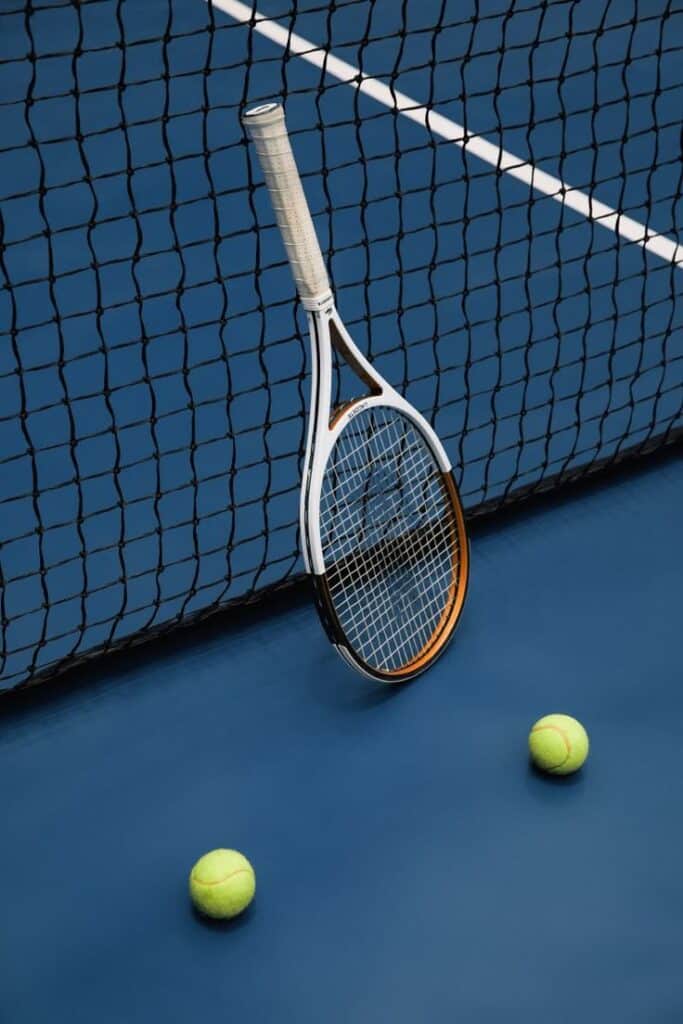
Understanding Tennis Rules and Scoring
Tennis has a unique scoring system that may seem complex at first, but becomes intuitive once you understand the basics. The game combines strategic play with specific rules about scoring, serving, and court positioning to create an engaging competitive experience.
Basic Rules of Tennis
Tennis is played on a rectangular court divided by a net. The objective is to hit the ball over the net and within the boundaries of your opponent’s court in a way they cannot return it. Singles matches are played with one player on each side, while doubles feature two players per team.
You must allow the ball to bounce only once before returning it. If the ball bounces twice on your side, your opponent wins the point.
The court has boundary lines that determine if a ball is “in” or “out.” For a shot to be valid, the ball must land within or on the boundary lines. Different lines apply for singles and doubles matches.
Players switch sides of the court after the first game and then after every odd-numbered game in each set. This ensures fairness regarding environmental factors like sun and wind.
How the Tennis Scoring System Works
Tennis scoring progresses from points to games to sets to matches. Points are counted as “love” (zero), 15, 30, 40, and game. When you win a point, your score increases in this sequence.
If both players reach 40 (three points each), the score is called “deuce.” From deuce, a player must win two consecutive points to win the game. The first point after deuce gives a player “advantage,” and winning the next point wins the game.
A standard set requires winning six games with a two-game advantage. If the score reaches 6-6, a tiebreak is typically played to determine the set winner. In a tiebreak, players must reach 7 points with a two-point advantage.
Matches are typically best-of-three or best-of-five sets. For example, a score of 6-4, 5-7, 6-1 means the winner took the first and third sets while losing the second.
Serving, Faults, and Lets
The serve initiates play for each point. Players serve from behind the baseline, alternating between the right (deuce) and left (advantage) service boxes. The serve must land in the diagonal service box on the opponent’s side.
A coin toss at the match beginning determines who serves first. Service alternates between players for each game.
A fault occurs when:
- The serve lands outside the correct service box
- The server steps on or over the baseline before hitting the ball
- The server misses the ball when attempting to hit it
After one fault, you get a second serve attempt. Two consecutive faults result in a “double fault,” and your opponent wins the point.
A “let” occurs when a served ball touches the net but still lands in the correct service box. Lets don’t count as faults, and you replay the serve.
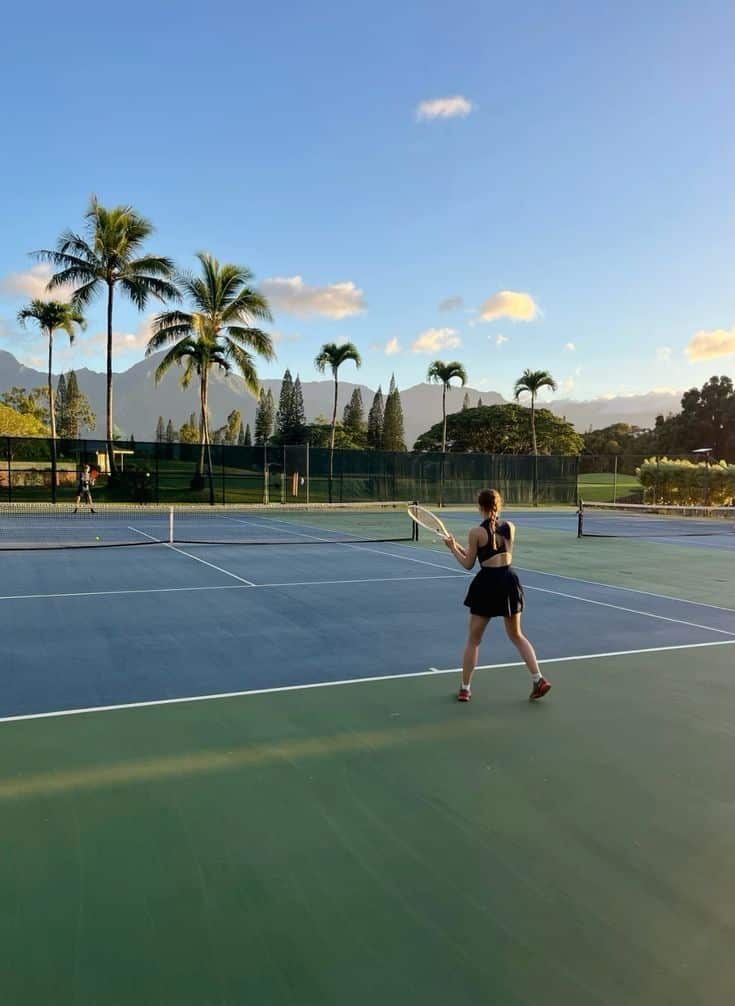
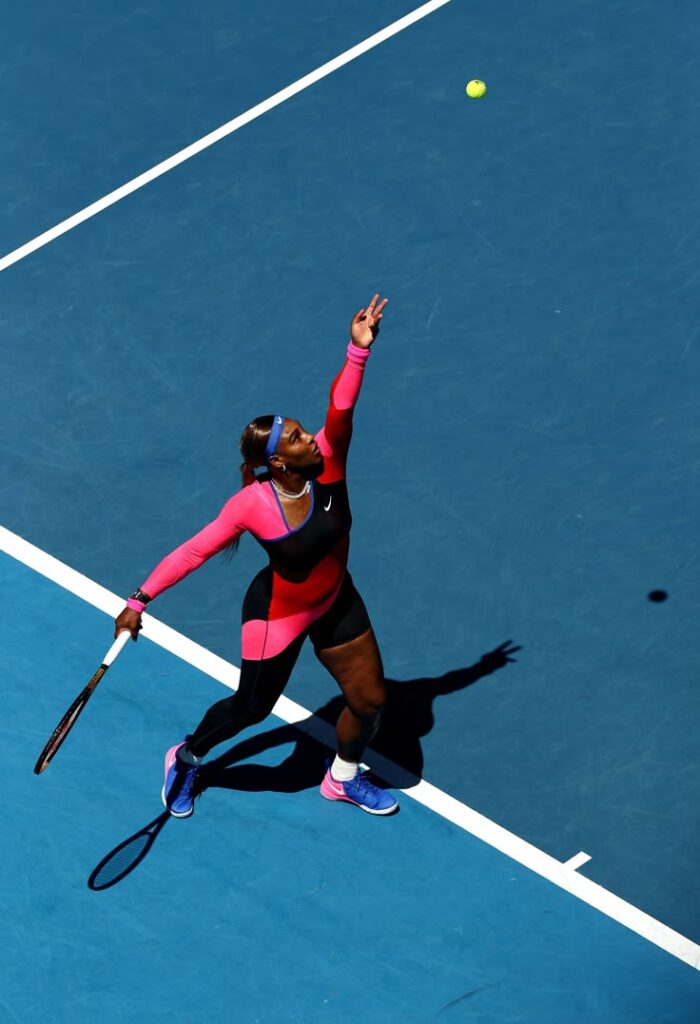
Mastering Basic Tennis Strokes
Developing proper stroke technique creates the foundation for your tennis game. Understanding the mechanics of each stroke will help you build consistency and confidence on the court.
Forehand and Backhand Fundamentals
The forehand is typically your most natural and powerful stroke. Start with a proper grip—most beginners benefit from the eastern forehand grip, where you “shake hands” with the racquet. Position yourself sideways to the net with your feet shoulder-width apart.
Create a good backswing by turning your shoulders and bringing the racquet back. As you swing forward, transfer your weight from back foot to front foot while keeping your eyes on the ball. Follow through by bringing your racquet up and across your body.
For the backhand, beginners can choose between a one-handed or two-handed technique. The two-handed backhand offers more stability and control. Position yourself sideways with your non-dominant shoulder facing the net.
Keep your wrist firm and lead with your non-dominant hand. Generate power from your legs and core, not just your arms. Practice both strokes regularly, focusing on consistent contact points and proper weight transfer.
Executing Volleys and Overhead Smashes
Volleys are shorter strokes executed near the net before the ball bounces. Use a continental grip (hold the racquet like you’re hammering a nail) for both forehand and backhand volleys.
Keep your backswing minimal—it’s more of a punch than a swing. Position your racquet in front of your body with the face slightly open. Step toward the ball with your opposite foot when making contact.
Backhand volleys follow similar principles but require a bit more wrist stability. Keep your elbow in front of your body and use your non-dominant hand to guide the racquet face.
For overhead smashes, track the ball early and position yourself under it. Point at the ball with your non-hitting hand while bringing your racquet behind your head, similar to a serve motion. Contact the ball at full extension with a downward angle into the opponent’s court.
Introduction to Lobs, Drop Shots, and Slices
Lobs are defensive shots that send the ball high over your opponent’s head. To execute a lob, open your racquet face and swing up and through the ball with less power than your normal groundstrokes. Aim to land the ball deep in your opponent’s court.
Drop shots require touch and deception. Use a continental grip and cut under the ball with minimal follow-through. The goal is to barely clear the net with a shot that dies quickly after bouncing.
The slice is a versatile shot with backspin that keeps the ball low. Use a continental grip and keep your racquet face slightly open. Instead of swinging through the ball, brush underneath it in a forward motion.
Practice these specialty shots only after developing solid groundstrokes. They add variety to your game but require good timing and feel, which comes with experience. Start implementing them in practice sessions before using them in matches.
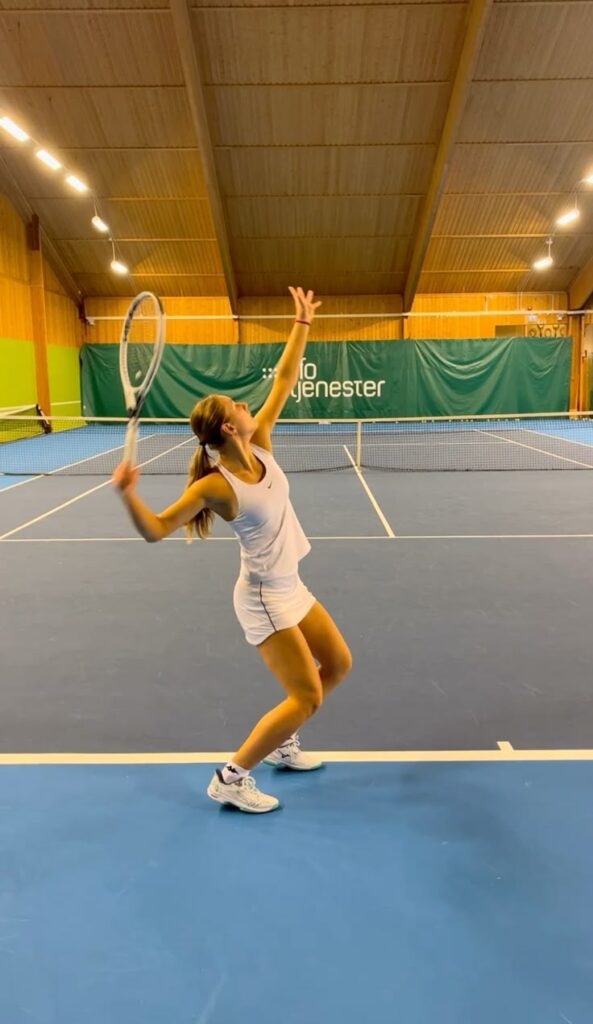
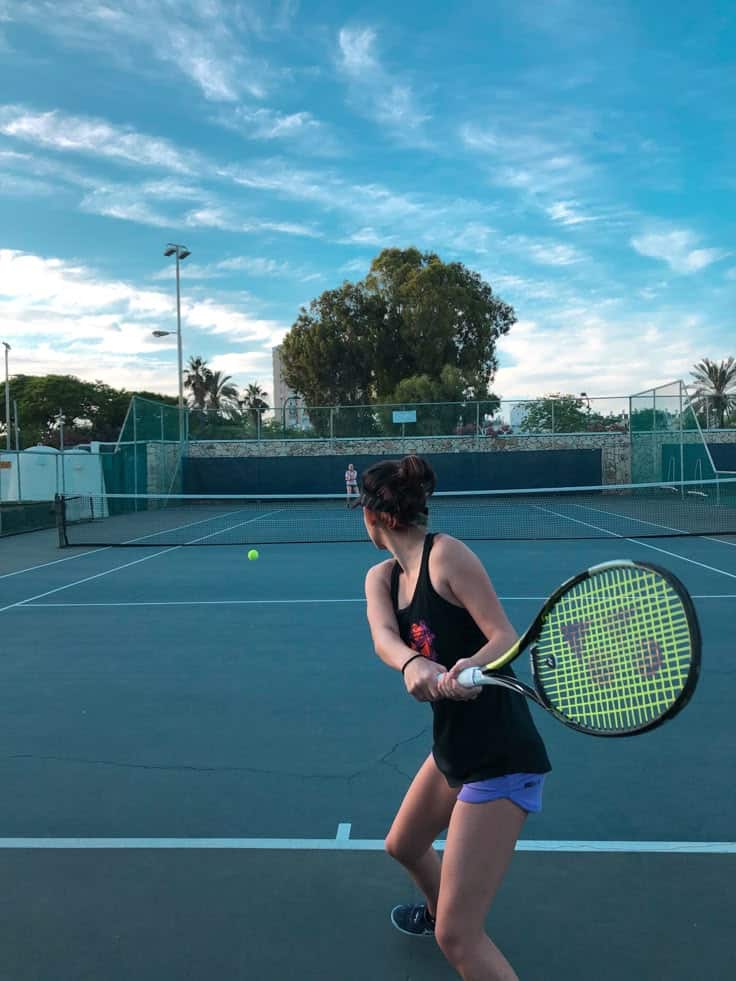
Developing Tennis Skills and Strategy
Mastering tennis requires a combination of physical abilities, technical skills, and strategic thinking. The foundation of your tennis development rests on solid footwork, refined coordination, and understanding basic tactical approaches to the game.
Building Footwork and Balance
Good footwork is essential for effective tennis play. Position yourself with feet shoulder-width apart and knees slightly bent to maintain a ready position. This stance allows you to move quickly in any direction when needed.
Practice split-stepping by making a small hop as your opponent hits the ball. This technique resets your balance and prepares you for movement. Try footwork ladder drills to improve agility and speed around the court.
Side-to-side shuffles help you cover the baseline efficiently. For approaching the net, practice crossover steps to maintain speed and balance. Remember to take small adjustment steps before hitting rather than lunging at the ball.
Recovery is just as important as initial movement. After each shot, immediately work to return to a central position on your side of the court. This prevents your opponent from exploiting open court space.
Improving Hand-Eye Coordination
Hand-eye coordination directly impacts your ability to consistently connect with the ball. Start with simple drills like bouncing a tennis ball on your racquet continuously, gradually increasing difficulty by alternating between forehand and backhand sides.
Wall practice offers valuable repetition for developing coordination. Stand about 10-15 feet from a wall and rally with yourself, focusing on controlling the ball’s placement and maintaining consistent contact.
Try tracking exercises where you call out specific characteristics of the approaching ball (like “high” or “low”) before hitting it. This trains your brain to process visual information quickly while preparing your body to respond.
Incorporate mini-tennis into your practice routine. Playing within the service boxes forces precision and helps develop touch and feel for the ball. As a beginner, spending 15 minutes daily on coordination drills will significantly improve your game.
Tactical Tips for Beginners
Consistency trumps power when you’re starting out. Focus on keeping the ball in play rather than trying to hit winners. Aim for depth by directing your shots to land between your opponent’s service line and baseline.
Use the center of the court strategically. When unsure where to hit, sending the ball down the middle reduces your opponent’s angle for returns. This buys you time to get back into position for the next shot.
Learn to read your opponent’s body position. If they’re leaning to one side, the opposite side of the court may be open. Watch their racquet preparation—a big backswing often signals a powerful shot is coming.
Basic patterns work well for beginners:
- After serving, move forward to apply pressure
- When pulled wide, hit crosscourt to buy recovery time
- When on defense, aim high with topspin to push your opponent back
Adjust your strategy based on court surface. Hard courts favor consistent baseline play, while clay allows more time to set up your shots.
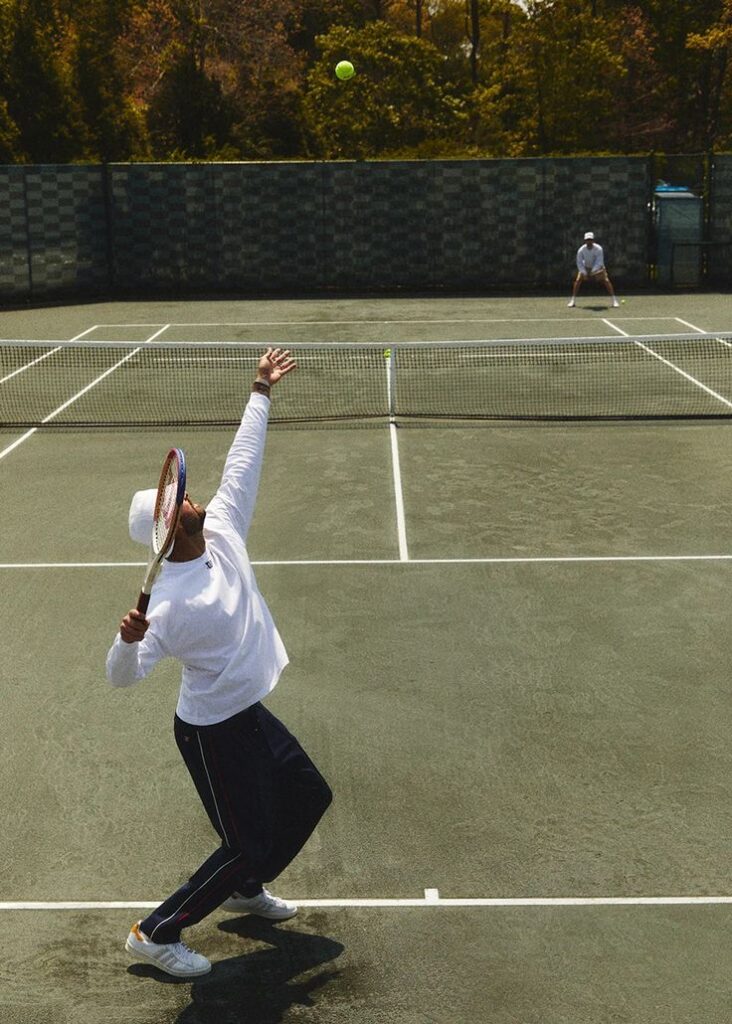

Singles, Doubles, and Game Formats
Tennis offers different formats that cater to various playing styles and preferences. Whether you’re playing one-on-one or with a partner, understanding the court dimensions and match structures will enhance your experience on the court.
Understanding Singles Tennis
Singles tennis pits one player against another in a test of individual skill and endurance. In this format, you cover the entire side of your court except for the doubles alley, which is considered out of bounds.
The singles court is narrower than a doubles court, measuring 27 feet in width compared to the 36 feet used for doubles. This creates a more focused playing area where you must defend your territory alone.
In singles, strategy often revolves around court positioning and shot selection. You’ll need to develop strong footwork to cover the court effectively and build stamina to last through potentially long rallies and matches.
Singles matches can be particularly demanding physically as there’s no partner to share the court coverage. Many beginners start with singles to develop their fundamental skills before venturing into doubles play.
Introduction to Doubles Tennis
Doubles tennis features two players on each side of the net, creating a more social and strategic game. The court is wider than singles, including the alley areas on both sides that would be out of bounds in singles play.
Communication with your partner is crucial in doubles. You’ll need to establish who takes which shots and develop a system for covering the court efficiently. Typically, players position themselves in either a side-by-side or up-and-back formation.
The serving rotation in doubles follows a specific pattern. Each player serves for an entire game, and the rotation follows a predetermined sequence throughout the match. This differs from singles where players alternate serves every game.
Doubles often features more net play and volleys than singles. The wider court and presence of a partner allows for more aggressive positioning, making doubles an excellent format for developing your net game.
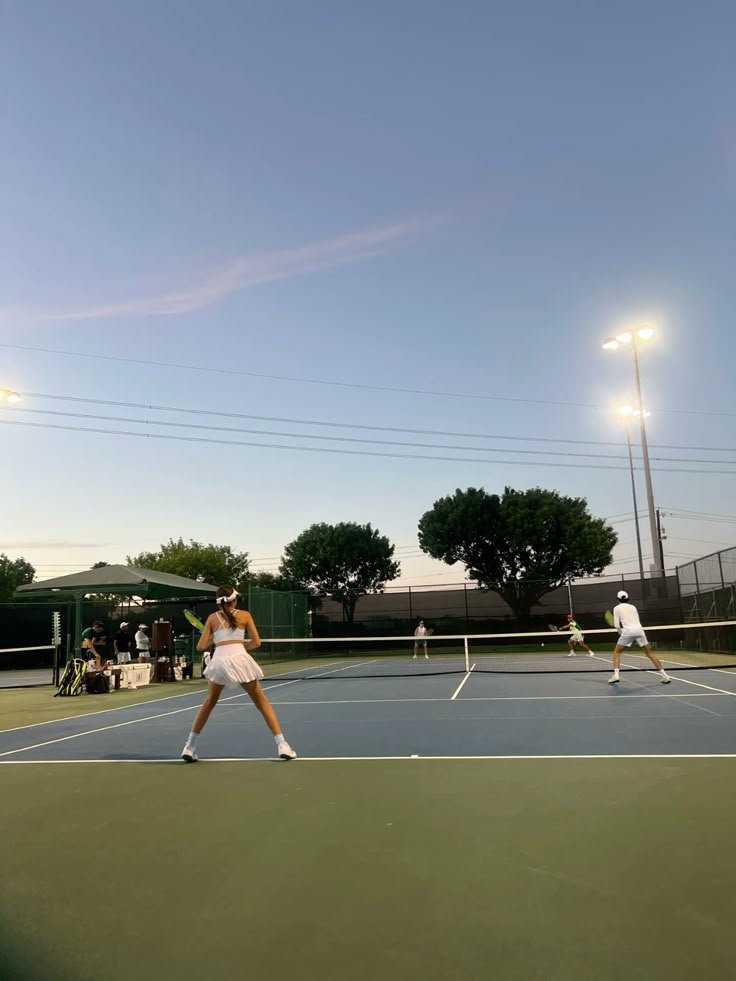
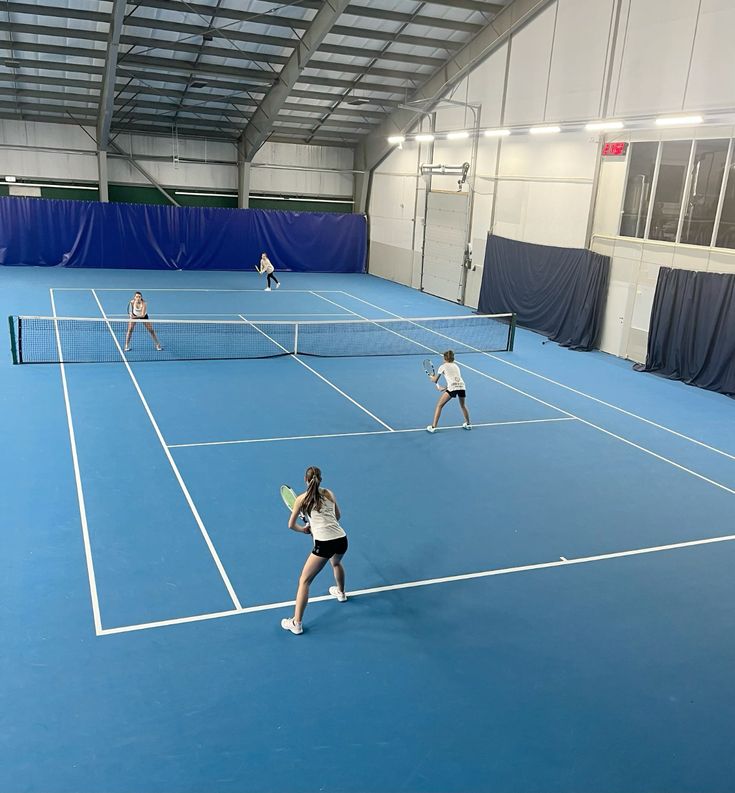
Common Match Types and Grand Slam Events
Tennis matches typically follow a structured format of games, sets, and matches. Most recreational matches use a best-of-3 sets format, while professional men’s Grand Slam events often use best-of-5 sets.
A standard set requires winning six games with a margin of at least two games. If players reach 6-6, a tiebreak is usually played to determine the set winner. This system ensures matches have a definitive conclusion.
The four Grand Slam tournaments—Australian Open, French Open, Wimbledon, and US Open—represent the pinnacle of tennis competition. Each has unique characteristics: the Australian and US Opens use hard courts, the French Open uses clay, and Wimbledon is played on grass.
Tournament formats vary widely. Some use round-robin play where each participant faces every other player in their group, while elimination tournaments remove players after a single loss. Understanding these different formats will help you participate in or follow tennis competitions more effectively.
- 0shares
- Facebook0
- Pinterest0
- Twitter0



